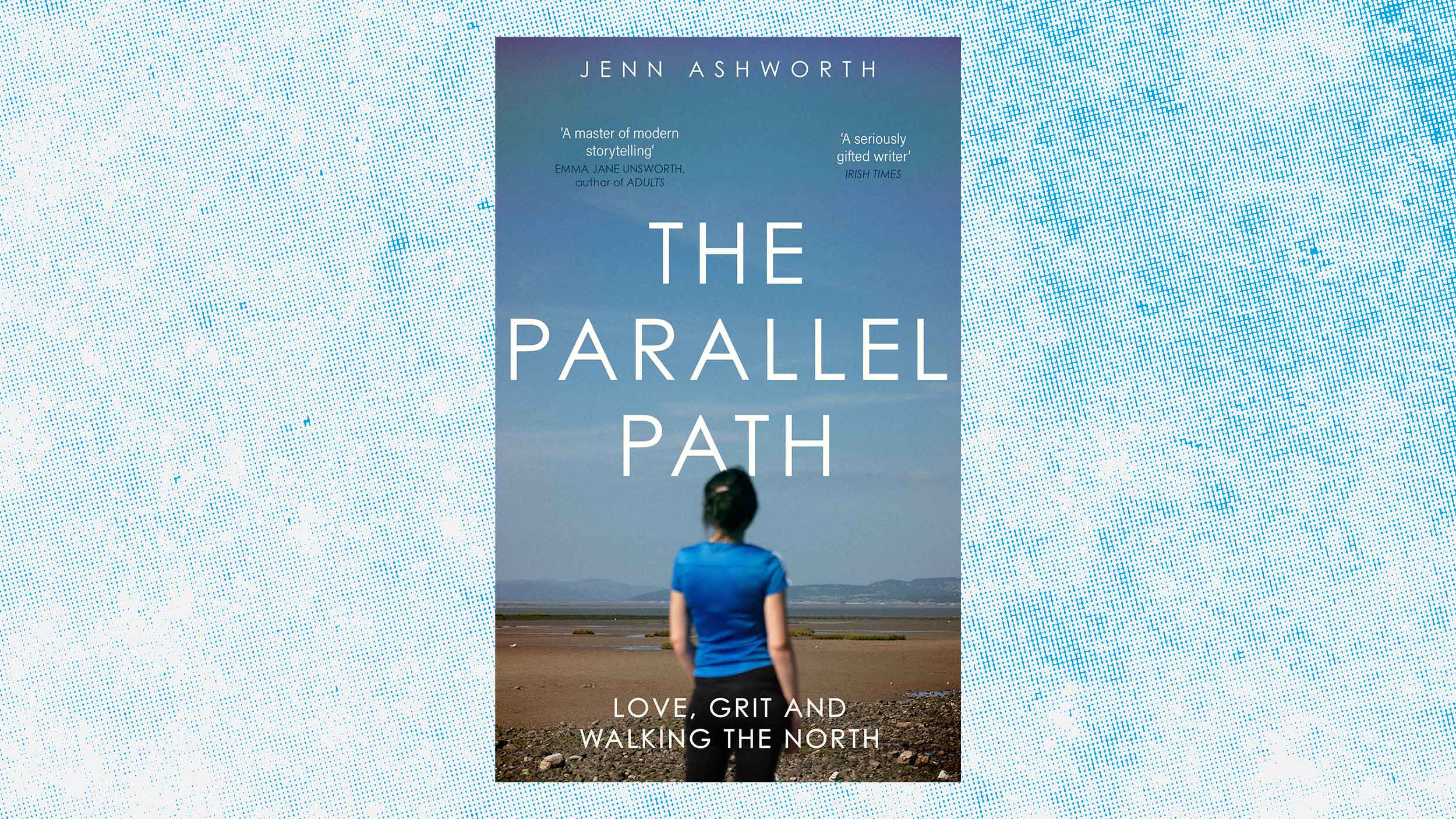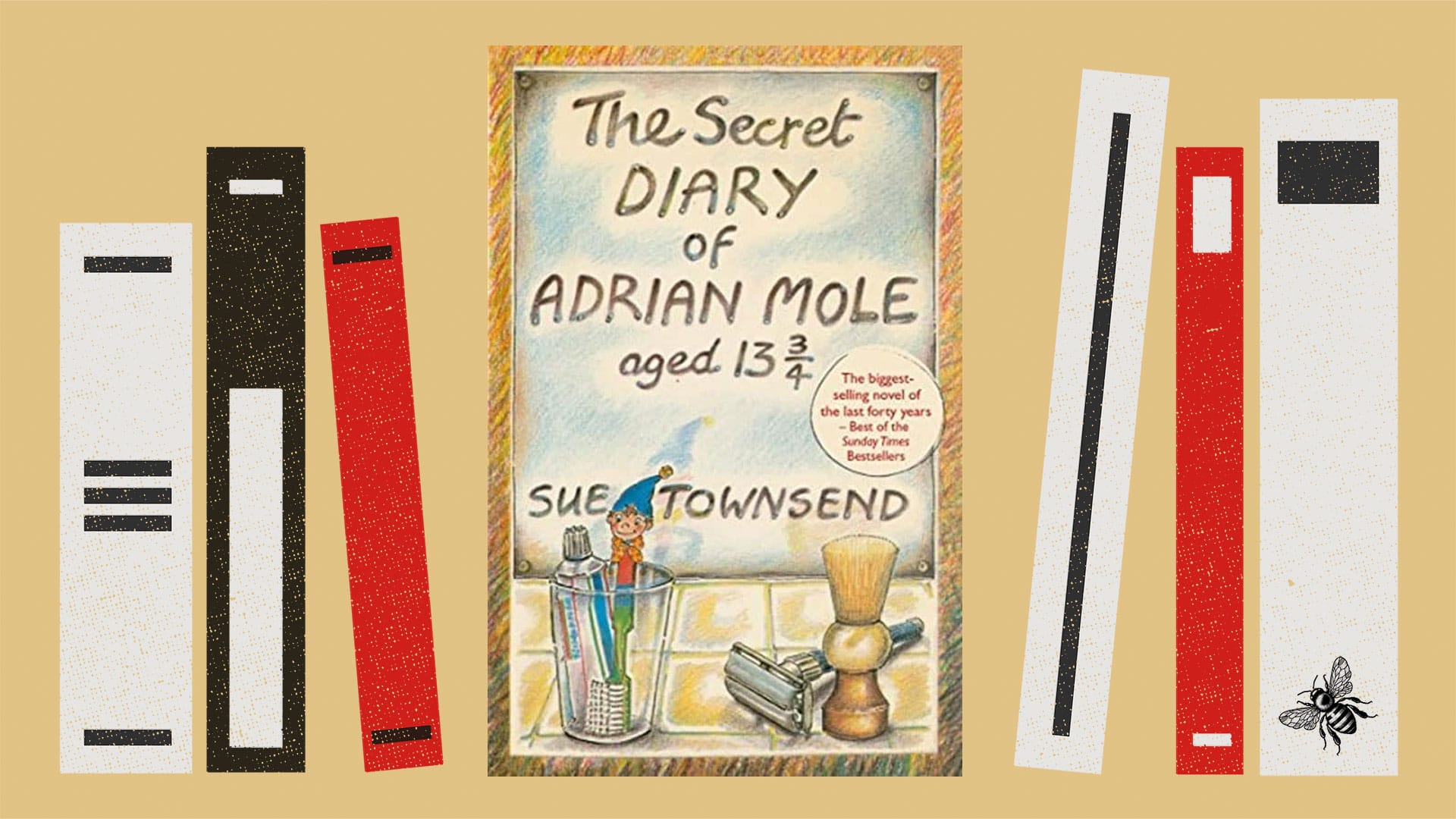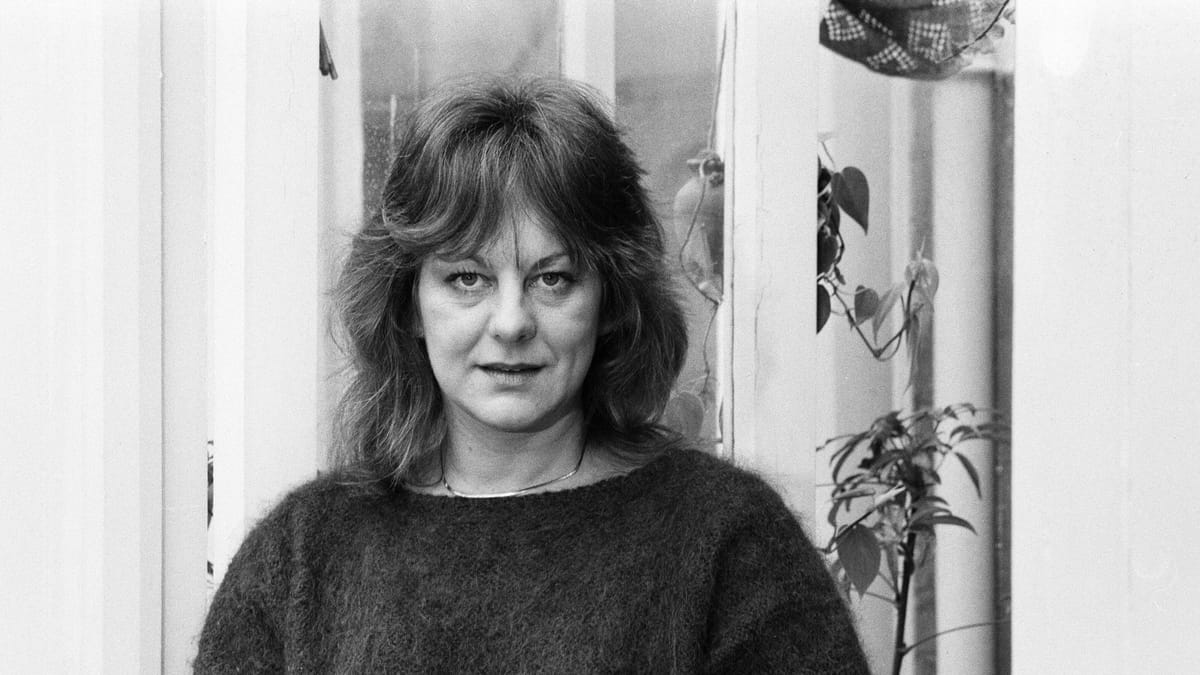I bought my boots on the first day of a late-arriving spring.
The man in the shop had measured my feet and ankles in eight different places and got me walking on a machine that recorded how much weight I was putting on each foot. He had me try on six different pairs and pace about the shop until he identified exactly the right brand for my narrow feet and rickety knees. There was a room upstairs to try them on and, nearby, a machine he took them to that fired steam through the leather at the heel and toe to soften and stretch and make tiny adjustments. He knelt in front of me to lace them as I sat up high on a raised chair. There was a right and wrong way to lace up these boots and he asked for my phone and filmed himself as he did it so I’d have it to refer back to later. On a shelf by my elbow were larger-than-life-sized bony anatomical models of feet and ankles that you were allowed to touch if you wanted to.
“What kind of walking will you be doing?” he asked, as he pulled the laces tight. I felt like a child being fitted for school shoes.
“I’m going to walk across the country,” I said. ‘All the way. Roads, fells, fields, moors. Bogs. All kinds of walking.’
The man looked at me, his expression unreadable. Did I look like someone capable of walking across the entire country? That’s what I wanted to know. He saved the video and handed my phone back to me.
“You’ll want good socks,” was all he said, and brought me a few pairs to look at.
When we went down to the counter and I got out my purse to pay he said I should get an extra pair of laces ‘for emergencies’, and though I suspected he was only trying to extract more money from me, I chose some anyway. He threw them in for free and wished me luck.
Back home, Duncan and our son were out in the garden making the most of the first sunny day in a long time. They were mowing the lawn, sorting out the plants, playing with the dog. I’d been out for ages; choosing boots had turned out to be a task that required more effort and precision than I’d anticipated.
“Are you pleased with them?” Duncan asked.
I pulled the new boots out of the box and handed them to him. He turned them over in his hands and made admiring noises as he examined them. I was pleased. But all I said was: “They were really expensive,” though I knew he wouldn’t care.
Get the good ones, he’d said that morning, as I set out in the car. Don’t cheap out on yourself.
It was me: I have always struggled with buying a good version of what I need. Now he tried to persuade me to enjoy what I’d bought. “They’re nice. They’re really good. Aren’t they?”
He waited as I put them on and humoured me by watching the film that demonstrated the correct way to tie their laces. I walked up and down the half-mown garden, kicking the grass clippings around and repeating what the man in the boot shop had promised me: these boots were so well fitted they wouldn’t even need breaking in.
“They’re great,” I said, finally allowing myself to have that little pleasure. Such a small thing, though it wasn’t about the boots, not really. Buying them had turned a wish into a plan. I paced another little circle around the garden, feeling the thrill of a pipe dream becoming real.
I’d been talking to Duncan about the idea of a really long walk for months. The desire came from nowhere: it was out of character. During the spring lockdown I’d walked my government-mandated hour like everyone else: traipsing around the park near where I lived, or up and down the canal. The spring of 2020 was tough, but at least the weather was good and walking in circles around the park felt more like leisure than punishment. When the country shut down again that December, I was already in the habit of getting outside to rest my eyes on the distant view of the sea and the western Lakeland fells at the end of each day. So all through the winter of 2020 and early 2021 I carried on walking.
A friend dubbed this dark time “the winter of fractions” as we both tried to work and teach our sons primary school maths. My daughter stayed in her bedroom, toiling through her GCSEs and becoming more despondent by the day. Duncan is a radiographer: he went to the hospital, he worked, he slept. When he was in the house, I locked myself away to talk to my students on Microsoft Teams. Other mothers seemed to handle this time better than I did: they arranged Zoom quizzes and online drinks parties and enjoyed socially distanced carol concerts in the street with their neighbours. I managed none of this. In the evenings, I went out into the city and paced but the darkness came earlier and earlier and the fells on the horizon disappeared into the streetlight-stained dusk. In the dark early mornings, I took the dog out in our morning circle, down the canal towards the hospital and back through the emptied town centre. The streets grew icy, and I looped around the city, looking at unlit Christmas trees in the shop windows. My new walking habit was compulsive, metronomic, habitual: I imagined wearing a groove in the pavements I walked on but the pavements wore their groove into me.
Kinhin is the Zen practice of slow, deliberate walking in circles. I have spent some time practising kinhin in Lancaster cemetery, following a black-robed priest between the stones with my head bowed and ignoring the flashy view out towards Morecambe Bay’s shining sandflats. When you slow walking down like that, balance becomes difficult: what was easy and thoughtless becomes awkward, ungainly and difficult. Like all good spirituality, kinhin is also practical; it provides a break from extended periods of sitting zazen, which tends to give you pins and needles in your feet. At the time, I thought this practice – to walk slowly and to pay attention to motion without destination – was about trying to learn self-control and balance. I thought walking like this was supposed to be a reminder of the human’s two-footed state of rational uprightness – something that separates us from the other animals. I was never very good at it, and would lurch and wobble, sometimes bumping into the walker in front of me as the urge to get it done surfaced in my body.
I tried to bring a patient curiosity about the experience of getting nowhere to the circular lockdown walks I traced around Lancaster that winter. But the walking seemed to cause and not ease a steadily increasing sense of constriction. There’s a scene in The Wicker Man when Sergeant Howie, who has been sent to the remote Scottish island of Summerisle to investigate the disappearance of Rowan Morrison, visits the local school where she is supposed to be. He’s enraged by what he finds there: the children have lessons in elementary witchcraft rather than reading, writing and arithmetic. One pupil lifts the lid of her desk to reveal not books, but a beetle tied to a nail by a thread. Howie watches the beetle in horror as it circles the nail. It scuttles slowly but determinedly, as if walking this way is work, as if it chooses its own route, as if there is a point to this. The girl whose desk it is laughs at his reaction: ‘The little old beetle goes round and round. Always the same way, y’see, until it ends up right up tight to the nail. Poor old thing!’ she explains. That’s what it felt like: my lockdown walking made that invisible thread tethering me to home, to the desk, to the kitchen gradually grow shorter. It was as if I was both inscribing and reducing the edge of my own world, hemming myself in, building a prison by pacing out the perimeter of it.
Even in less dramatic times, most of the walks I went on were circular ones. My dog and I would start and end from home or the car. The walk itself was sometimes a break, sometimes a duty, sometimes a treat, but it was always an interruption to the real substance of my life: one spent inside and in company; at home, at work and at the shops. The idea of reversing this and making walking the real thing, and my life indoors a mere interruption to it, started to intrigue me. How long and how far would I need to walk before walking would turn my life upside down and inside out? There was no chance of testing this. I would stretch that government-mandated hour to its absolute limit but home and the computer always lay in wait. Sometimes I set an alarm on my phone and at the half-hour point it would vibrate in my pocket and that string attaching me to the house like an umbilical cord would tighten and twitch and haul me back.
Plenty has been said about the benefits of slow strolling through the city. Walter Benjamin’s Arcades Project and Virginia Woolf’s Street Haunting both give the reader the flâneur, the urban idler, the people watcher. Woolf insists that to walk through London is “the greatest rest”, because her imaginative contact with others freed her from the lonely prison of self. Benjamin understands his strolling through Paris as a means of subversion. The urban walker’s purposeless meandering resists the oppressions of designed spaces, loitering refuses the busy ritual of the commute and idling enacts a creative “no” to the city’s ceaseless imperative to buy things. Both writers consider city walking a way to shatter ego: there’s something truthful, necessary and humbling about being just one of a crowd. Walking could change the walker and the world. And though I couldn’t take the kind of long walk that would let me turn the way I lived on its head, maybe circling around my home city could create its own kind of change.
But as the French philosopher Frédéric Gros says, “This form of strolling presupposes three elements, or the presence of three conditions: city, crowd and capitalism.” That winter I still had a city to walk through, but lockdown had cleared out the crowds and stilled the shopfront manifestations of its capitalism. I walked through Lancaster town centre in the middle of a Saturday afternoon, and it was quieter than at two in the morning. Ghost town. Crossing a footbridge over the M6 during rush hour presented me with an uncanny view of an emptied motorway: I could have sauntered across it safely. Though I did see more Amazon and supermarket delivery vans than usual, the shut-up shops kept their Christmas decorations in the windows until March and there were no commuters, only empty buses advertising films that had never been released and police cars circling the pedestrianised areas. Woolf may have found her refuge by disappearing into London’s crowded streets, but I found you cannot flâneur properly if they’ve closed the cafés and put police tape over all the benches.
Winter passed. Spring returned, as it always does, and I carried on my walking in circles even as I began to know I needed a different way to stretch my legs and ease my mind. A couple of Google searches later and I found it. Alfred Wainwright’s Coast to Coast Walk; not a loop and not an amble through a city but a determined beeline slicing its way through the entire North of England. Wainwright, the Lancashire-born author of the intricately illustrated series of books known collectively as The Pictorial Guide to the Lakeland Fells, devised this walk in the early 1970s. I lay in bed and studied it obsessively, the laptop screen glowing in the dark.
Wainwright’s walk begins at St Bees headland and crosses three national parks – the Lake District, the Yorkshire Dales and the North York Moors – on its way to its final destination, the tiny fishing village of Robin Hood’s Bay in north-east Yorkshire. The successful coast-to-coaster crosses seven rivers (the Ehen, Derwent, Rothay, Lowther, Eden, Swale and Esk) and completes a range of ascents and descents equivalent to getting up and down Everest. Could I do that? And if I did, would it make me different? The desire started to bloom. Wainwright’s books are small, his cramped handwriting not always easy to read. His tone is superior and sometimes bossy: he always assumes a male reader, someone who needs to convince his wife to let him out into the countryside, who needs advice about how to avoid barbed wire snagging the testicles on an awkward clamber over a fenced-off right of way. I read and reread a book that was not for me, giggling at the thought of doing this. Even imagining the walk felt both silly and joyful – mainly because it was not the sort of thing someone like me (bookish, poor with directions, fond of warmth and home comforts) would do. The possibility of stepping out of character for a time and of being someone other than myself became as tempting as truancy.
Wainwright’s walk has always attracted the competitive. Fell runners and army cadets get it done in relay shifts with support teams carrying their kit. In 2021 Damian Hall did it in 39 hours and 18 minutes, beating a record held by ultra-fell runner Mike Hartley since 1991. He’d done it in 39 hours and 36 minutes. While Wainwright himself intended his book more as a set of suggestions than a strict guide, he also endorses this effortful, self-propelled style of walking. No strolling for him: the way a person walks is also a reflection on the way a person lives: ‘One should always have a definite objective. In a walk as in life – it is so much more satisfying to reach a target by personal effort than to wander aimlessly. An objective is an ambition, and life without ambition is … well, aimless wandering.’ Reading that, the wild giddiness I felt at the prospect of setting out ebbed away and I closed the book. The midlife aimless wander my life had become had been seen and disapproved of.
The end of the pandemic and the return to normal life had brought rapid changes to the lives of every member of my family but me. My son moved from primary school to high school and my daughter from high school into sixth form. Duncan changed his job and moved from radiography into CT, involving an adjustment to his working hours and a long period of training. The three of them were leaving the pandemic behind them, finding their new “objectives” and “ambitions” – to take Wainwright’s words – and emerging – not unscathed – into the next part of their lives. It wasn’t like that for me. I stayed where I was to welcome in the next influx of students who were also alive with their own hopeful ambitions; and when I wasn’t working, carried on wandering with my dog around the park, a part of me still locked down inside my own head. Some anxiety had gathered in my body and when I sat in front of a computer I started to fidget, wanted the windows open, wanted to rest my eyes on some point in the distance, some fell or sea view. When I was in a meeting on campus, I wanted everyone to hurry up and stop talking so I could get out, so I could breathe, so I could rest myself in silence.
I had become difficult, I think, to live with. Impatient, irritable, impossible to please. It was hard to work out what the problem was. I was healthy. I enjoyed my work and was lucky to have it. It wasn’t quite depression and not quite anxiety. The fact that I had nothing to complain about but the routine ordinariness of being needed by people who were important to me made it worse. I only knew I had felt like this before, a long time ago, and back then, walking was an instinctive thing my body did when it tried to soothe itself.
Read our interview with Jenn Ashworth.
All donations go towards supporting the Bee’s mission to nurture, publish promote and pay for the best new working-class writing.









Comments